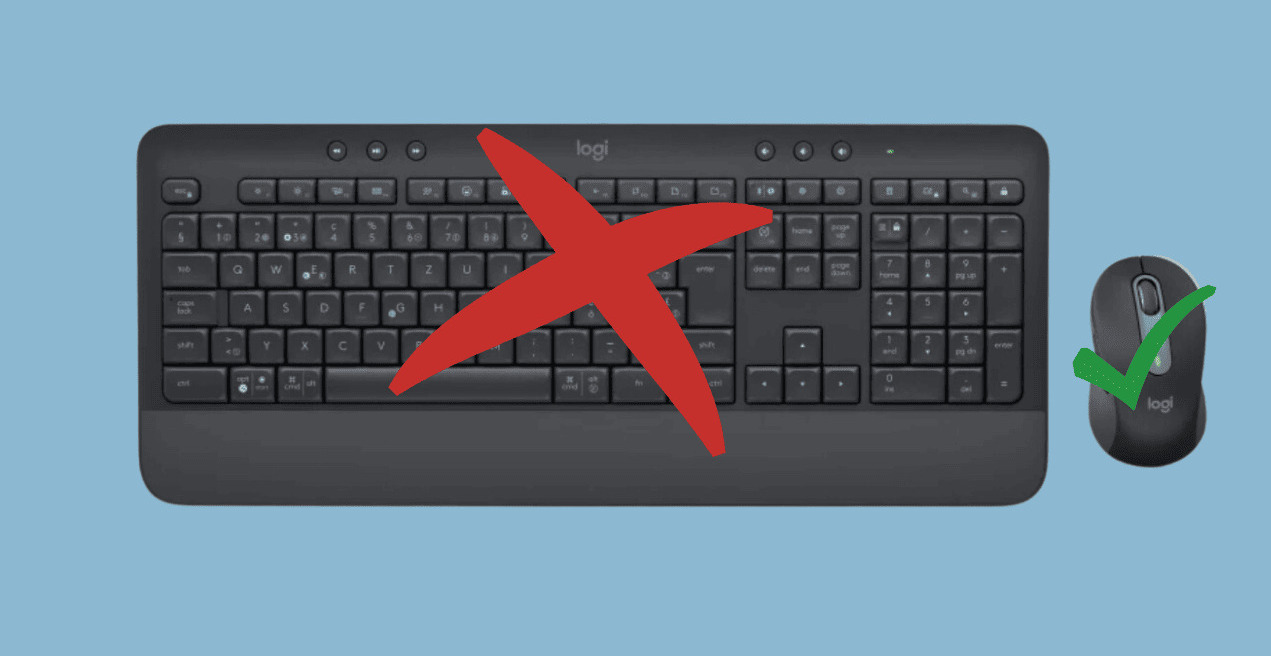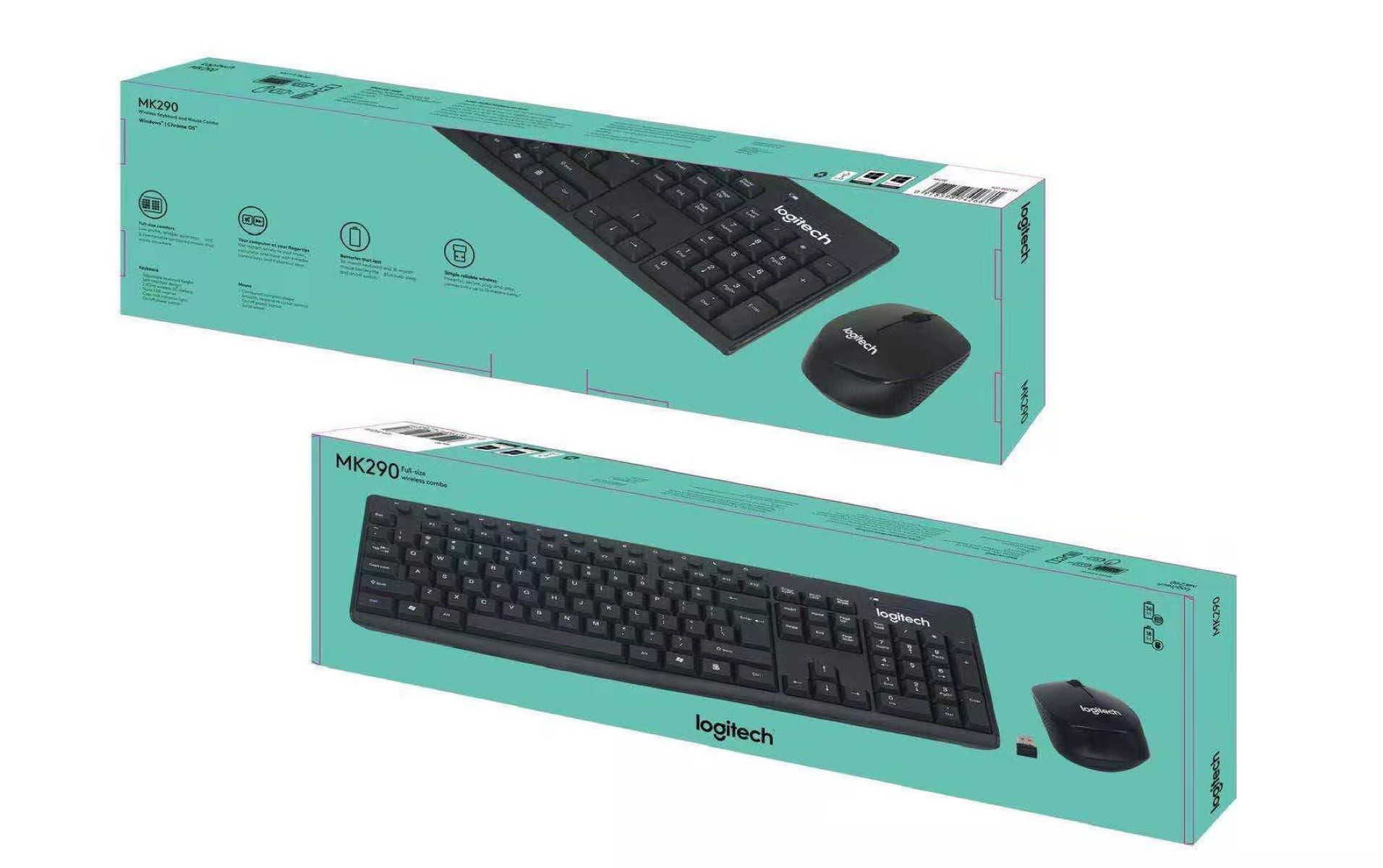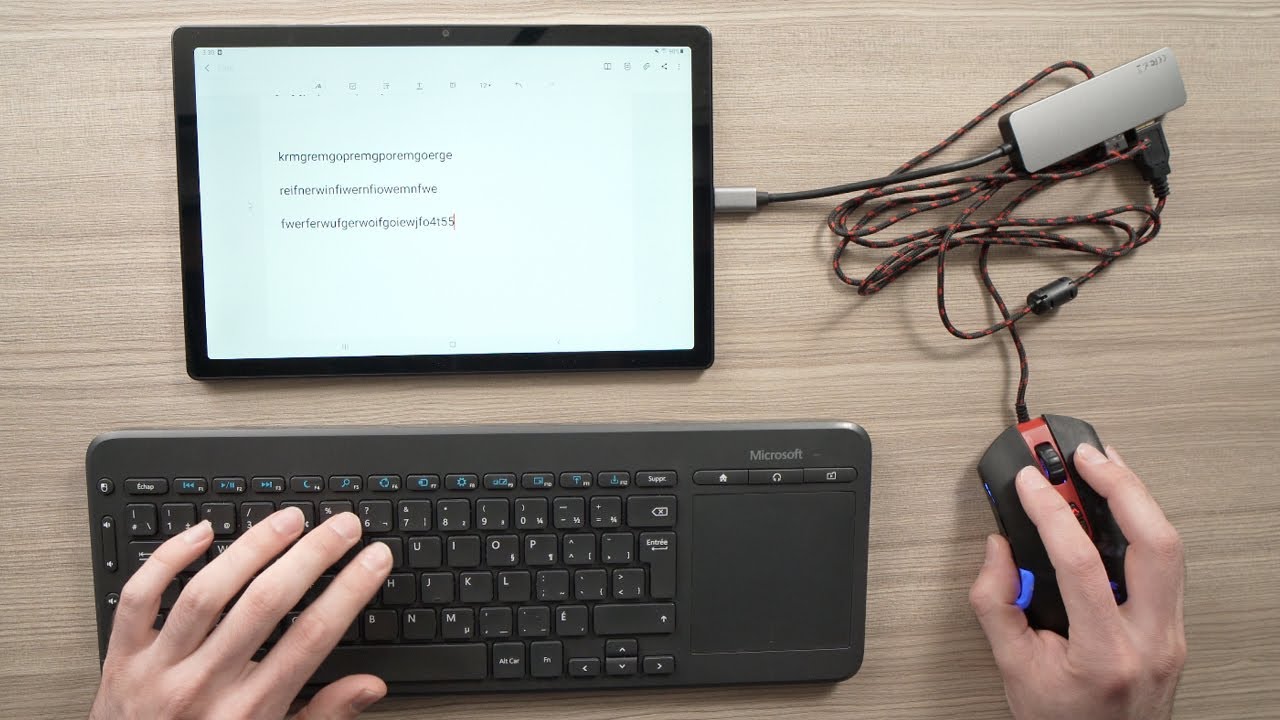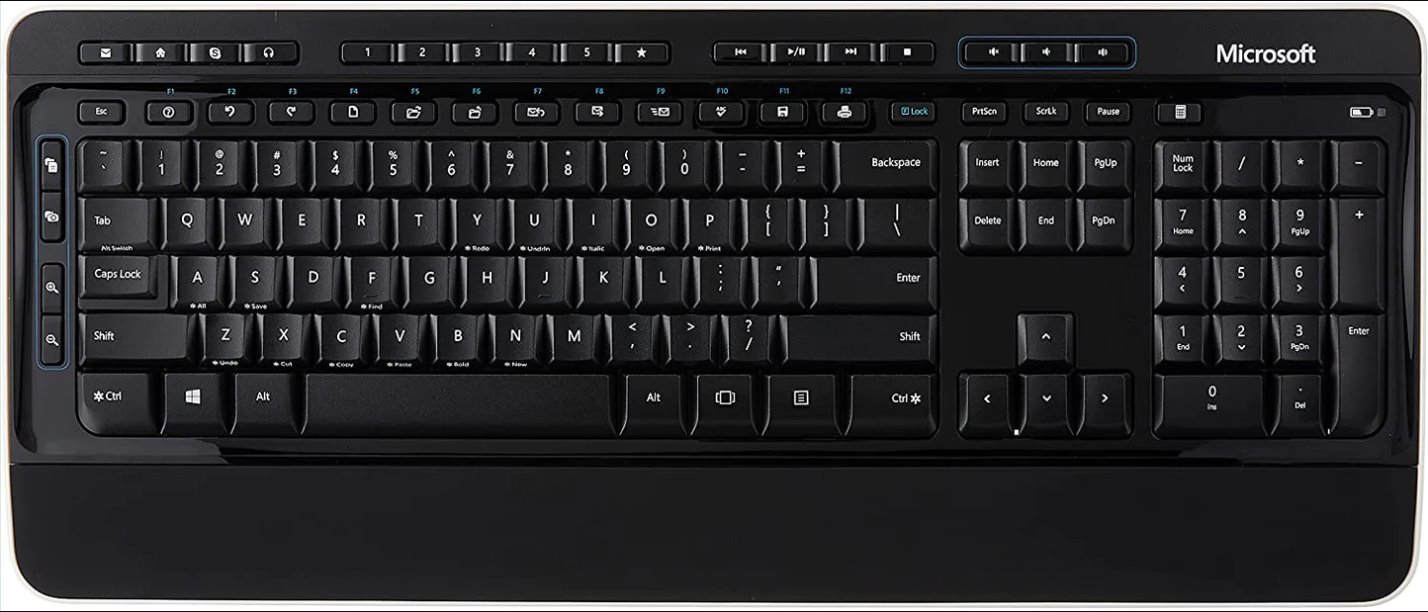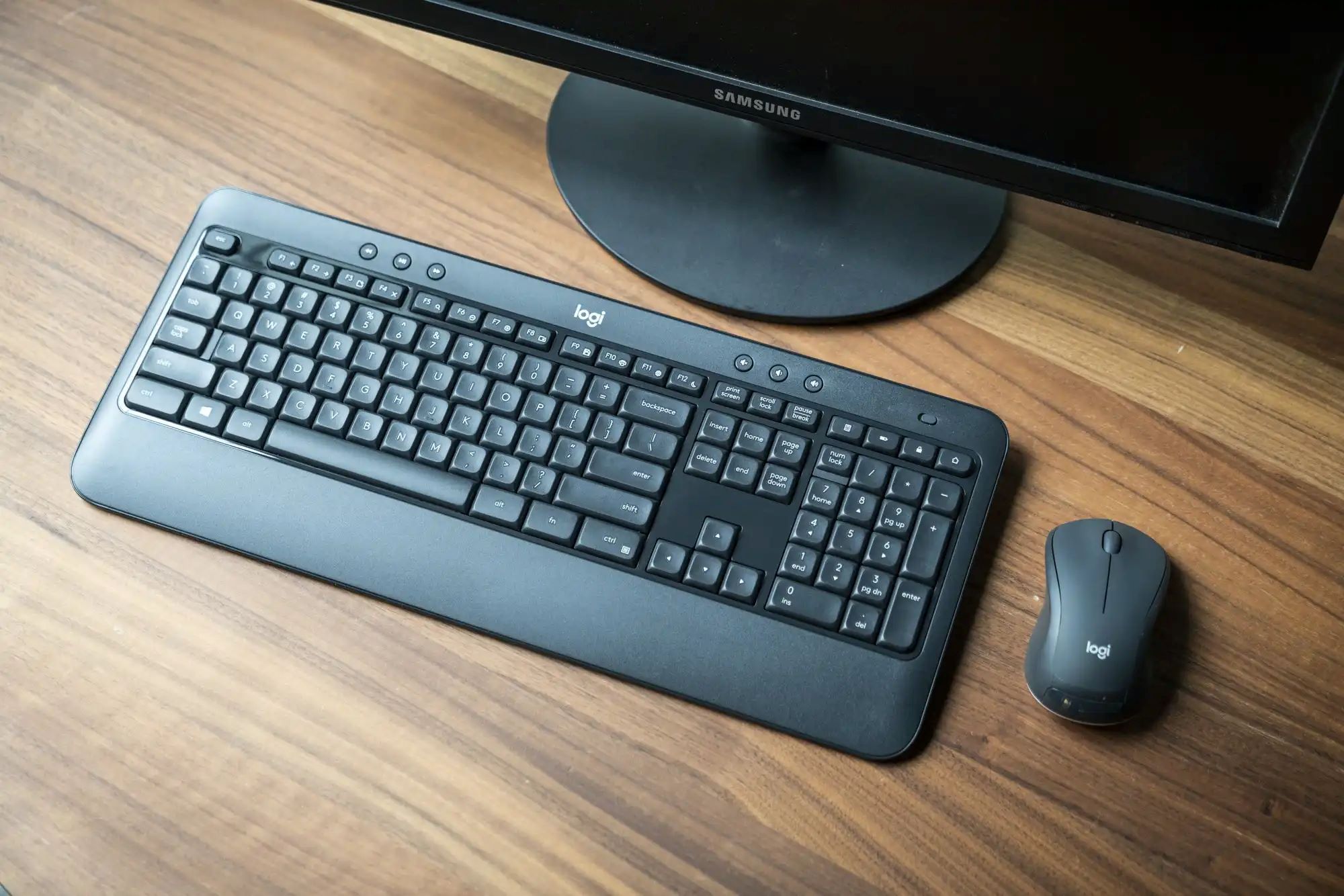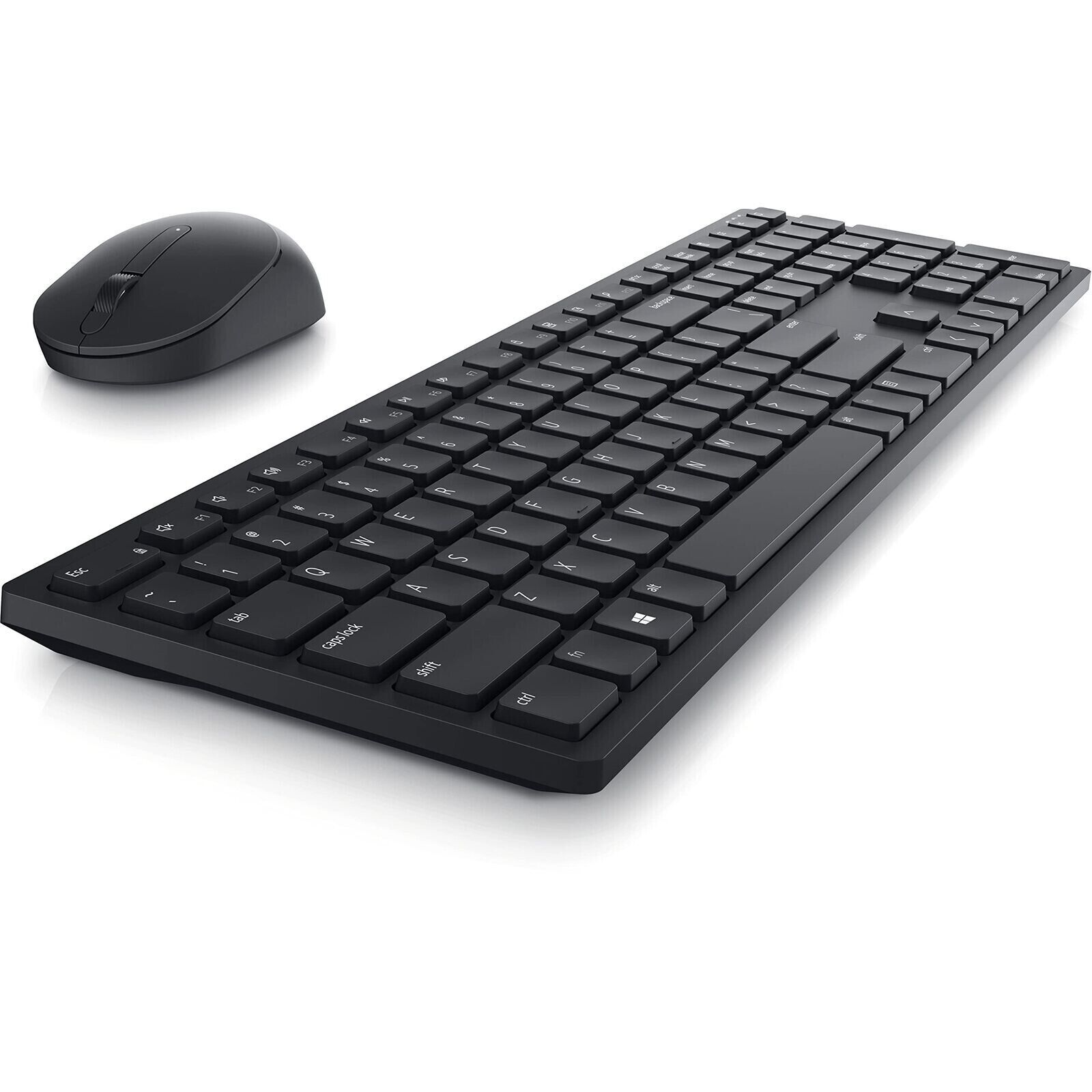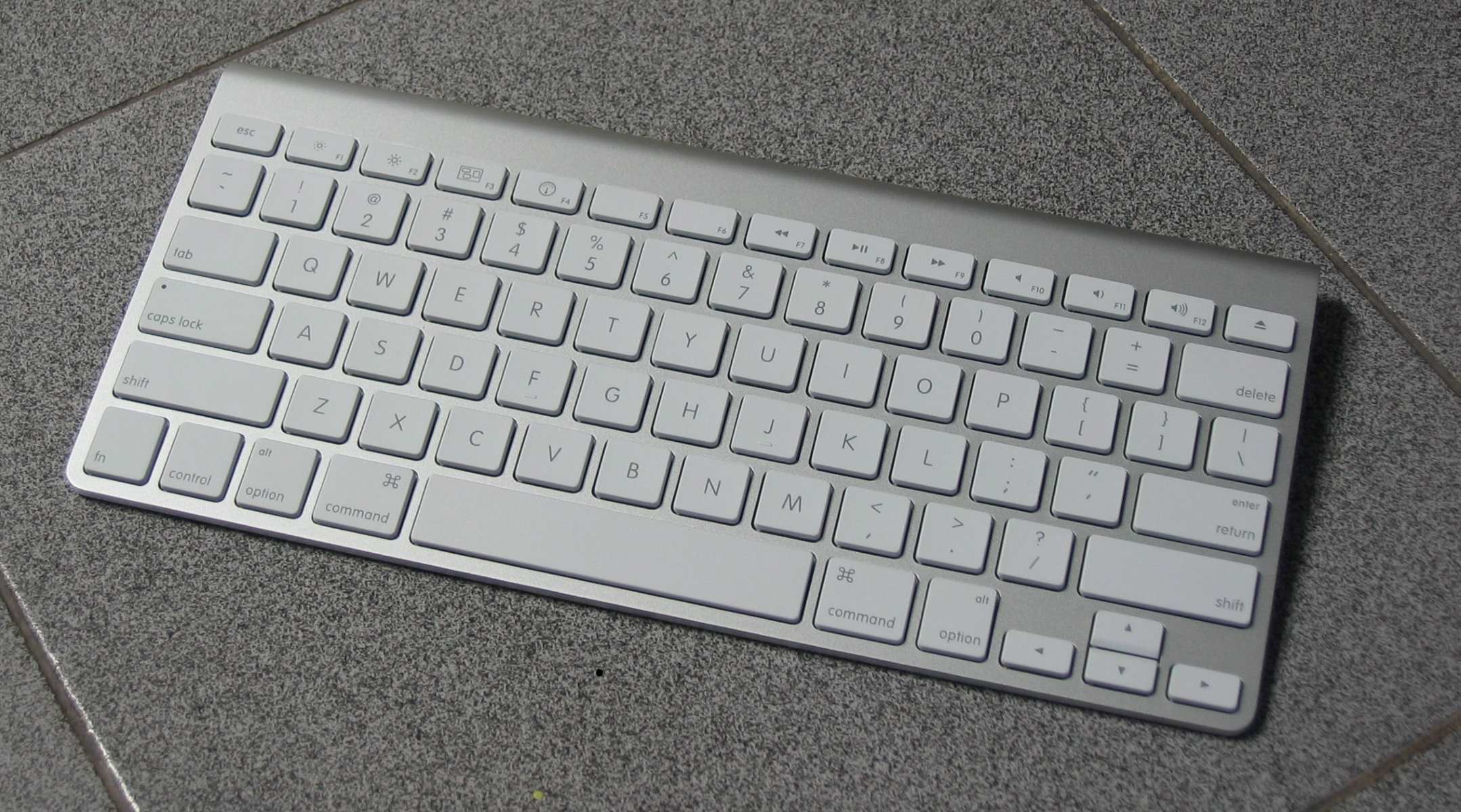Introduction
Wireless keyboards have become increasingly popular due to their convenience and flexibility. However, just like any other electronic device, they may encounter some issues that hinder their functionality. If you’re facing problems with your wireless keyboard, don’t worry – we’re here to help.
In this article, we will explore some troubleshooting steps to help you address the most common issues with non-functioning, lagging, or unresponsive wireless keyboards. Whether you’re a tech enthusiast or simply someone looking for a solution, these tips will assist you in getting your wireless keyboard back up and running.
Before diving into the troubleshooting steps, it’s important to note that wireless keyboards, like any other wireless device, rely on a properly functioning connection between the keyboard and the receiver. If this connection is disrupted or weakened, it can result in various issues ranging from non-functioning keys to delayed response time.
It’s worth mentioning that the troubleshooting steps provided in this guide are general and may vary depending on the model and brand of your wireless keyboard. However, the underlying principles remain the same, and these steps should give you a good starting point in resolving the common issues you may encounter.
So, whether you’ve just purchased a new wireless keyboard or are experiencing difficulties with your existing one, let’s explore the troubleshooting steps you can take to get it working smoothly again.
Troubleshooting Steps for Non-Functioning Wireless Keyboard
If your wireless keyboard is not functioning at all, meaning that none of the keys are registering when pressed, there are several potential causes and solutions to consider:
1. Check the Battery: The first thing to do when experiencing non-functioning keys on your wireless keyboard is to check the battery. Ensure that it has enough power and is properly inserted. If the battery is low or has been depleted, replace it with a fresh one.
2. Re-sync the Keyboard to the Receiver: Sometimes, the connection between the keyboard and the receiver can become disrupted. To fix this, locate the small connect button on the receiver and press it. Then, press the connect button on your wireless keyboard. This should re-establish the connection and get your keyboard working again.
3. Update Keyboard Drivers: Outdated or incompatible keyboard drivers can also cause non-functioning keys. Check the manufacturer’s website for any available driver updates for your specific keyboard model. Download and install the latest drivers to ensure compatibility and optimal performance.
4. Ensure Keyboard is Properly Connected: Double-check that the wireless receiver is firmly connected to your computer’s USB port. If it’s plugged into a USB hub, try connecting it directly to the computer to rule out any potential issues with the hub. Additionally, make sure there are no physical obstructions blocking the signal between the keyboard and the receiver.
5. Restart the Computer: Sometimes, a simple restart can resolve temporary issues with the wireless keyboard. Restart your computer and see if the keyboard starts functioning properly afterwards.
If none of these troubleshooting steps resolve the issue of non-functioning keys on your wireless keyboard, it may be a hardware problem. In that case, it’s recommended to contact the manufacturer’s support or check the warranty information to explore repair or replacement options.
Check the Battery
One of the most common causes of a non-functioning wireless keyboard is a low or depleted battery. If your keyboard is not responding at all, checking the battery should be your first troubleshooting step.
To check the battery on your wireless keyboard, follow these steps:
1. Locate the Battery Compartment: Look for a small compartment on the bottom or back of your keyboard. It is usually secured with a latch or a sliding panel. Open the compartment to access the battery.
2. Check the Battery Level: Once you have access to the battery compartment, check the battery level indicator if available. Some keyboards may have a small LED or a battery level icon that shows the remaining charge. If the indicator is showing low or no charge, it’s time to replace the battery.
3. Replace the Battery: If the battery is low or depleted, remove the old battery and replace it with a fresh one. Make sure to use the correct type and size of battery specified by the manufacturer. Insert the new battery following the correct polarity (+/-) indicated in the battery compartment.
4. Test the Keyboard: Once the new battery is inserted, close the battery compartment and test the keyboard. Press a few keys to check if they register on your computer screen. If the keyboard is functioning as expected, the battery replacement was successful.
5. Dispose of Old Batteries Properly: When replacing the battery, it’s important to dispose of the old battery responsibly. Refer to your local regulations for proper battery disposal methods, as they can be harmful to the environment if not handled correctly.
Remember to check the battery regularly to ensure that your wireless keyboard remains in good working condition. If the keyboard continues to have issues even after replacing the battery, proceed to the next troubleshooting steps to further diagnose and address the problem.
Re-sync the Keyboard to the Receiver
If your wireless keyboard is not functioning properly, re-syncing it to the receiver can often restore the connection and resolve any communication issues between the two devices. Here are the steps to re-sync your keyboard:
1. Locate the Connect Buttons: On both the wireless keyboard and the wireless receiver, look for small connect buttons. They are typically labeled with an icon resembling an antenna or a wave.
2. Press the Connect Button on the Receiver: Press and hold the connect button on the wireless receiver for a few seconds. This will put the receiver into pairing mode, ready to establish a connection with the keyboard.
3. Press the Connect Button on the Keyboard: After pressing the connect button on the receiver, immediately press and hold the connect button on the wireless keyboard. The location of the connect button may vary depending on the keyboard model, so refer to the manufacturer’s instructions if needed.
4. Wait for the Connection: Keep holding the connect button on the keyboard until you see a notification or LED indicator confirming that the keyboard and receiver have successfully synced. This process may take a few seconds or longer, so be patient.
5. Test the Keyboard: Once the keyboard and receiver have successfully synced, test the keys to ensure they are functioning properly. Type on a word document or any other text input field to verify that the keyboard is now responsive.
If the re-syncing process doesn’t resolve the issue, try performing it again. It’s also worth noting that some wireless keyboards may have a limited connection range, so ensure that you are within the recommended distance to maintain a stable connection.
By re-syncing your wireless keyboard and receiver, you can refresh their connection and eliminate any potential interference or communication problems. If the keyboard continues to have issues, proceed to the next troubleshooting steps to further troubleshoot and resolve the problem.
Update Keyboard Drivers
If your wireless keyboard is experiencing issues, such as non-functioning keys or inconsistent performance, outdated or incompatible keyboard drivers may be the culprit. Updating the keyboard drivers can often resolve these issues and ensure optimal compatibility and performance. Here’s how you can update your keyboard drivers:
1. Identify the Keyboard Model: Before proceeding, it’s essential to know the exact model of your wireless keyboard. You can usually find this information on the bottom or back of the keyboard, or refer to the product documentation provided by the manufacturer.
2. Visit the Manufacturer’s Website: Open your web browser and navigate to the website of the keyboard manufacturer. Look for a “Support” or “Downloads” section on the site, where you can find the latest driver updates for your keyboard model.
3. Locate the Correct Drivers: On the manufacturer’s website, locate the drivers specifically designed for your keyboard model and the operating system of your computer. Download the latest version of the driver software to your computer. Be sure to download drivers only from official sources to avoid malware or compatibility issues.
4. Install the Updated Drivers: Once the driver software is downloaded, locate the file on your computer and run the installer. Follow the on-screen instructions to install the updated drivers. During the installation process, you may need to connect your keyboard to the computer via USB or follow additional prompts provided by the installer.
5. Restart Your Computer: After the driver installation is complete, restart your computer to ensure that the updated drivers are fully activated. This will also allow any changes made during the installation process to take effect.
After updating the keyboard drivers, test the keyboard to see if the issues have been resolved. Check if the non-functioning keys are now working, and if the overall performance of the keyboard has improved. If the problems persist, continue with the remaining troubleshooting steps for further diagnosis.
Updating the keyboard drivers is an important step in troubleshooting wireless keyboard issues. It ensures that your keyboard and computer have the necessary software compatibility for smooth and reliable operation. Keep in mind that driver updates may vary depending on the keyboard model and manufacturer, so always refer to the specific instructions provided by the manufacturer for accurate and up-to-date information.
Ensure Keyboard is Properly Connected
If your wireless keyboard is not functioning correctly, one possible cause could be an improper connection between the keyboard and the computer. Here are some troubleshooting steps to ensure that your keyboard is properly connected:
1. Check the USB Connection: If your wireless receiver is connected to your computer via USB, make sure that it is securely plugged into a functional USB port. If it is connected to a USB hub, try connecting it directly to a USB port on your computer to rule out any issues with the hub.
2. Restart the Wireless Receiver: Unplug the wireless receiver from the USB port and wait for a few seconds. Then, plug it back in. This can help reset the connection between the receiver and the computer, potentially resolving any connectivity issues.
3. Check for Physical Obstructions: Ensure that there aren’t any physical obstructions between the wireless keyboard and the receiver. Objects such as other electronic devices or metal surfaces can interfere with the signal and disrupt the connection. Try repositioning the receiver and the keyboard to minimize any interference.
4. Verify the Bluetooth Connection: If your wireless keyboard uses Bluetooth technology, make sure that Bluetooth is enabled on your computer. Check the Bluetooth settings in your computer’s control panel or settings menu and ensure that the keyboard is paired and connected properly.
5. Replace Batteries or Recharge the Keyboard: If your wireless keyboard is battery-powered, ensure that the batteries have enough power. Replace them with fresh batteries if needed. If your keyboard has a rechargeable battery, connect it to a power source and allow it to charge fully. A low battery can cause connectivity issues and non-responsive keys.
After going through these steps, test your wireless keyboard to see if it is functioning correctly. Check if the keys are registering on your computer and if the overall performance has improved.
By ensuring that your wireless keyboard is properly connected, you can eliminate any potential issues related to the connection between the keyboard and the computer. If the problem persists, proceed to the next troubleshooting steps to further diagnose and address the issue.
Troubleshooting Steps for Lagging or Delayed Wireless Keyboard
If you’re experiencing lag or delays when typing on your wireless keyboard, it can be frustrating and hinder your productivity. Fortunately, there are several troubleshooting steps you can take to address this issue:
1. Check for Interference from Other Devices: Other wireless devices or electronic equipment in close proximity to your wireless keyboard can cause interference and affect the keyboard’s performance. Move your keyboard away from devices such as Wi-Fi routers, cordless phones, or microwaves to reduce potential signal interference.
2. Move the Wireless Receiver Closer to the Keyboard: If your wireless keyboard has a receiver, try moving it closer to your keyboard. Sometimes, a weak signal between the keyboard and the receiver can cause lag or delay. By reducing the distance between the keyboard and the receiver, you can strengthen the connection and potentially improve performance.
3. Replace Batteries or Charge the Keyboard: Lag or delays can also occur due to a low battery level. If your wireless keyboard uses batteries, replace them with fresh ones. Alternatively, if your keyboard has a rechargeable battery, connect it to a power source and allow it to charge fully. A fully charged keyboard can provide a more stable and responsive connection.
4. Restart the Computer: Sometimes, a simple restart can resolve temporary issues with the wireless keyboard or any conflicting software. Restart your computer and see if the lag or delay issue improves afterwards. This can help refresh the system and eliminate any background processes causing interference.
5. Update Keyboard Drivers: Outdated or incompatible keyboard drivers can also contribute to lag or delays. Make sure to check for any available driver updates from the manufacturer’s website. Download and install the latest drivers to ensure optimum compatibility and performance.
If none of these troubleshooting steps resolve the lag or delayed response issue, it’s recommended to contact the manufacturer’s support for further assistance or to explore warranty options. They may be able to provide specific guidance or offer a solution tailored to your wireless keyboard model.
By following these troubleshooting steps, you can increase the responsiveness of your wireless keyboard and enjoy a smoother typing experience. Remember to test your keyboard after each step to determine if the issue has been resolved before moving on to the next troubleshooting step.
Check Interference from Other Devices
Interference from other devices can often cause lag or delays when using a wireless keyboard. If you’re experiencing these issues, it’s essential to check for potential sources of interference and take steps to minimize their impact. Here are some troubleshooting steps to help you:
1. Identify Potential Interference Sources: Take note of any electronic devices or wireless equipment near your keyboard that could potentially interfere with its signal. Common sources of interference include Wi-Fi routers, cordless phones, baby monitors, Bluetooth devices, and microwave ovens.
2. Create Distance from Interference Sources: Move your wireless keyboard away from devices that emit radio waves, such as Wi-Fi routers and cordless phones. By increasing the distance between the keyboard and these devices, you can reduce the potential interference that can cause lag or delays.
3. Adjust the Placement of Devices: If you’re unable to create significant distance between the keyboard and interfering devices, consider adjusting their physical placement. Position the devices at opposite ends of the room or on different floors to minimize the chances of interference occurring.
4. Use Wired Connections for Interfering Devices: If possible, connect devices that are causing interference, like Bluetooth or Wi-Fi devices, using a wired connection. This can eliminate any potential wireless interference and create a more stable environment for your wireless keyboard.
5. Change the Channel or Frequency: Some devices, such as Wi-Fi routers, operate on specific channels or frequencies. If you are experiencing interference from a Wi-Fi network, try changing the channel in your router’s settings to a less crowded one. This can potentially reduce the interference with your wireless keyboard signal.
6. Power Off Unused Devices: Turning off any devices that are not in use can also help minimize interference. Devices like Bluetooth speakers or printers, when powered on but not actively in use, can still create interference. Powering them off can free up wireless frequencies and reduce the chances of interference affecting your keyboard.
By checking for interference from other devices and taking appropriate steps to minimize their impact, you can improve the performance of your wireless keyboard. Remember to test the keyboard after implementing each troubleshooting step to check for any improvement in its responsiveness and overall functionality.
Move the Wireless Receiver Closer to the Keyboard
If you’re experiencing lag or delays with your wireless keyboard, one possible solution is to move the wireless receiver closer to the keyboard. A weak signal between the keyboard and the receiver can cause communication issues and result in poor keyboard performance. Here’s how you can troubleshoot and improve the connection:
1. Assess the Distance: Evaluate the current distance between the wireless receiver and the keyboard. If there are any obstacles or walls between them, they can weaken the signal. The optimal distance between the receiver and the keyboard should be within the manufacturer’s recommended range, typically around 10 meters (30 feet).
2. Relocate the Receiver: If the distance between the keyboard and the receiver exceeds the recommended range or if there are obstacles in the way, try relocating the wireless receiver to a closer position. Find a spot that allows for a direct line of sight between the receiver and the keyboard, if possible. This can help strengthen the signal and improve keyboard responsiveness.
3. Use a USB Extension Cable: In cases where finding a suitable location for the receiver is challenging, using a USB extension cable can be a helpful solution. Plug one end of the extension cable into the USB port of your computer and connect the wireless receiver to the other end. This allows you to position the receiver closer to the keyboard while maintaining a reliable connection.
4. Remove Potential Obstacles: Ensure that there are no physical obstructions such as metal objects or other electronic devices near the receiver and keyboard. These obstacles can interfere with the wireless signal and lead to performance issues. Clear the area around the receiver and keyboard to maximize signal strength.
5. Test the Keyboard: After moving the wireless receiver closer to the keyboard, test the keyboard’s responsiveness. Type on a text document or engage in regular keyboard activities to see if the lag or delays have improved. If the performance is satisfactory, then the repositioning of the receiver has resolved the issue.
By moving the wireless receiver closer to the keyboard, you strengthen the signal and minimize potential interference, which can greatly enhance the performance of your wireless keyboard. If the issue persists even after adjusting the receiver’s position, proceed with the other troubleshooting steps to further diagnose and resolve the problem.
Replace Batteries or Charge the Keyboard
If you’re experiencing lag or delays with your wireless keyboard, it could be due to low battery power. Wireless keyboards typically rely on battery power to function properly. Here’s what you can do to address this issue:
1. Check Battery Level: Determine if your wireless keyboard is powered by disposable batteries or has a rechargeable battery. Check the battery level indicator, if available, to see if the battery is low or depleted. Some keyboards may have an LED indicator that shows the battery status.
2. Replace Disposable Batteries: If your wireless keyboard uses disposable batteries, replace them with fresh ones. Make sure to use the correct battery type and follow the manufacturer’s guidelines. Incorrect battery types or reversed polarity can cause performance issues or damage your keyboard.
3. Recharge the Keyboard: If your wireless keyboard has a rechargeable battery, connect it to a power source and allow it to charge fully. Refer to the manufacturer’s instructions for the recommended charging time. A fully charged battery ensures optimal performance and can help resolve lag or delay issues.
4. Monitor Battery Life: Keep an eye on the battery life of your wireless keyboard. If you frequently experience lag or delays, it may be an indicator that the battery is running low. Make it a habit to replace or recharge the battery before it is completely depleted to maintain smooth keyboard performance.
5. Adjust Power Settings: Some wireless keyboards have power-saving features that allow you to adjust the sleep settings. Consider adjusting the power settings to minimize battery drain without compromising functionality. This can help prolong the battery life and reduce the chances of encountering lag or delay issues.
By replacing the batteries or charging the keyboard, you ensure that it has sufficient power to operate at its best. Regularly monitoring battery levels and taking appropriate actions can help you avoid performance issues and maintain a responsive wireless keyboard.
If the issue persists even after replacing or charging the batteries, proceed to the next troubleshooting steps to further diagnose and resolve the problem.
Troubleshooting Steps for Unresponsive Wireless Keyboard
If your wireless keyboard is completely unresponsive and not registering any keystrokes, it can be quite frustrating. However, there are several troubleshooting steps you can take to address this issue:
1. Restart Your Computer: Sometimes, a simple restart can resolve temporary issues with the wireless keyboard. Restart your computer and see if the keyboard starts functioning properly afterward. This can help refresh the system and eliminate any background processes causing the unresponsiveness.
2. Check the Battery: Ensure that the battery in your wireless keyboard has enough power and is properly inserted. A low or depleted battery can cause the keyboard to become unresponsive. If the battery is low or empty, replace it with a fresh one to see if that resolves the issue.
3. Try the Keyboard on a Different Device: Connect the wireless keyboard to a different computer or device to determine if the issue is specific to the keyboard or if it could be a compatibility problem with your computer. If the keyboard functions properly on another device, it may indicate an issue with your computer’s settings or drivers.
4. Check USB Connections: If your wireless keyboard uses a USB receiver, ensure that it is properly connected to the computer. Try plugging the receiver into a different USB port to rule out any potential issues with a particular port. If possible, use a USB port directly on the computer instead of a USB hub.
5. Remove Interference: Check for any potential sources of interference near your wireless keyboard. Other electronic devices, such as routers or smartphones, can interfere with the wireless signal and cause the keyboard to become unresponsive. Move these devices away from the keyboard to minimize the interference.
6. Contact the Manufacturer: If none of the above steps resolve the issue and your wireless keyboard remains unresponsive, it may be a hardware malfunction. Contact the manufacturer’s support or consult the warranty information for further assistance. They may offer troubleshooting specific to your keyboard model or provide repair or replacement options.
Following these troubleshooting steps can help you identify and resolve the issue of an unresponsive wireless keyboard. By eliminating common software, connectivity, and battery-related problems, you can restore functionality and enjoy a fully functional keyboard experience.
Restart the Computer
When faced with an unresponsive wireless keyboard, one of the most basic yet effective troubleshooting steps is to restart your computer. Restarting can resolve temporary issues or conflicts that may be preventing the keyboard from functioning properly. Here’s how you can perform a computer restart:
1. Save and Close Programs: Before restarting your computer, save any unsaved work and close all open programs. This ensures that your data is not lost and that all applications are properly closed.
2. Click on the Start Menu: In the bottom left corner of your screen, click on the Start menu, represented by the Windows logo.
3. Select Restart: From the menu that appears, click on the “Power” option and then select “Restart.” Alternatively, you can press the Ctrl + Alt + Delete keys together and choose “Restart” from the options displayed.
4. Wait for the Computer to Restart: Your computer will now initiate the restart process. Wait for it to shut down and boot back up. The time it takes to restart may vary depending on your computer’s configuration and the number of applications running.
5. Test the Wireless Keyboard: Once your computer has restarted, test the wireless keyboard to see if it is now responsive and functioning properly. Type on a document or engage in regular keyboard activities to check if the unresponsiveness issue has been resolved.
Restarting your computer refreshes the operating system and can resolve temporary glitches or conflicts that may be impacting the performance of your wireless keyboard. It clears the system’s memory and restarts background processes, potentially eliminating any obstacles that were preventing the keyboard from working efficiently.
If the keyboard continues to be unresponsive after the restart, proceed with the other troubleshooting steps to further diagnose and resolve the issue.
Try the Keyboard on a Different Device
If you’re experiencing issues with your wireless keyboard and it remains unresponsive on your current device, it’s worth trying the keyboard on a different device. This step will help determine if the problem lies with the keyboard itself or with the compatibility or settings of your computer. Here’s how you can proceed:
1. Find an Alternative Device: Locate another computer or device that is compatible with your wireless keyboard. It can be a laptop, another desktop computer, or even a mobile device that supports wireless keyboards.
2. Connect the Wireless Keyboard: Follow the manufacturer’s instructions to connect your wireless keyboard to the alternative device. If the keyboard uses a USB receiver, insert the receiver into an available USB port. If it uses Bluetooth, pair it with the device according to the Bluetooth settings.
3. Test the Keyboard: Once the wireless keyboard is connected to the alternative device, test its functionality. Type on a document or engage in regular keyboard activities to check if the keyboard is responsive and functioning properly.
4. Observe the Results: Pay attention to the performance of the wireless keyboard on the alternative device. If it works flawlessly and registers all keystrokes without any issues, it suggests that the problem might lie with your original computer or its settings. In this case, you can focus your troubleshooting efforts on that particular computer.
5. Rule Out Hardware Issues: If the wireless keyboard continues to exhibit unresponsive behavior on the alternative device as well, it suggests that the keyboard itself may have a hardware issue or a defect. In such cases, it is advisable to contact the manufacturer’s support or consult the warranty information to explore repair or replacement options.
By testing the wireless keyboard on a different device, you can isolate whether the problem lies with the keyboard or with the specific computer you were initially using. This troubleshooting step helps narrow down the scope of the issue and guides you towards the appropriate solutions.
Remember to follow the manufacturer’s instructions for properly connecting and using the wireless keyboard on the alternative device. If the keyboard works fine on the alternative device, proceed with other troubleshooting steps to identify and resolve the compatibility or settings issues on your original computer.
Contact the Manufacturer for Support or Warranty Information
If you have followed the troubleshooting steps for your unresponsive wireless keyboard and are still experiencing issues, it may be time to contact the manufacturer for further assistance. The manufacturer can provide valuable support and warranty information to help address the problem. Here’s what you should do:
1. Locate Manufacturer’s Contact Information: Visit the manufacturer’s website or refer to any documentation that came with your wireless keyboard to find their contact information. Look for a dedicated support or customer service section on their website.
2. Reach Out to Technical Support: Contact the manufacturer’s technical support team by phone, email, or through their website’s chat support. Clearly describe the issue you’re facing with your wireless keyboard, providing details such as the model number, any error messages, and the troubleshooting steps you have already taken.
3. Follow the Guidance Provided: The manufacturer’s technical support team will guide you through additional troubleshooting steps or provide specific instructions on how to resolve the issue. They may ask you to perform certain tests or submit diagnostic information to help identify the problem.
4. Check for Warranty Coverage: If your wireless keyboard is still under warranty, inquire about warranty coverage and any options for repair or replacement. The manufacturer’s support team will inform you about the warranty duration, terms, and any requirements for submitting a warranty claim.
5. Follow RMA or Repair Procedures: If it is determined that your wireless keyboard requires repair or replacement, the manufacturer’s support team will guide you through the Return Merchandise Authorization (RMA) process or provide instructions for sending the keyboard for repair. Ensure that you understand and follow their procedures accurately.
Remember to provide all required documentation or proof of purchase when submitting a warranty claim or seeking repair assistance. Keep copies of any communication with the manufacturer, including support tickets or case numbers, for future reference.
Contacting the manufacturer for support or warranty information is crucial when all troubleshooting steps have been exhausted, and your wireless keyboard remains unresponsive. They have the expertise and resources to provide specific guidance tailored to your keyboard model, helping you resolve the issue efficiently.
Be patient and cooperative when communicating with the manufacturer’s support team, as they are best equipped to help you with your specific situation. Their guidance may lead to a resolution or provide options for repair or replacement, depending on the warranty coverage and the severity of the issue.
Conclusion
Dealing with a non-functioning, lagging, or unresponsive wireless keyboard can be frustrating, but with the troubleshooting steps outlined in this guide, you can effectively address these issues. Start by checking the battery and ensuring that it has enough power. Re-syncing the keyboard to the receiver and updating the keyboard drivers can also help resolve connectivity problems. Additionally, verifying that the keyboard is properly connected and troubleshooting for interference from other devices can greatly improve performance.
If you are facing lag or delays, try moving the wireless receiver closer to the keyboard, replacing the batteries, or charging the keyboard if it has a rechargeable battery. In the case of an unresponsive keyboard, restarting the computer or trying the keyboard on a different device can provide insight into the issue. If all else fails, contacting the manufacturer for support or warranty information is recommended.
Remember, each wireless keyboard model may have specific troubleshooting steps, so consult the manufacturer’s documentation for more detailed guidance. By following these troubleshooting steps, you can save time, frustration, and potentially avoid the need for costly repairs or replacements.
Ultimately, maintaining a functional and responsive wireless keyboard requires regular monitoring, keeping it updated, and taking appropriate care. By doing so, you can enjoy uninterrupted typing and a seamless computing experience.










